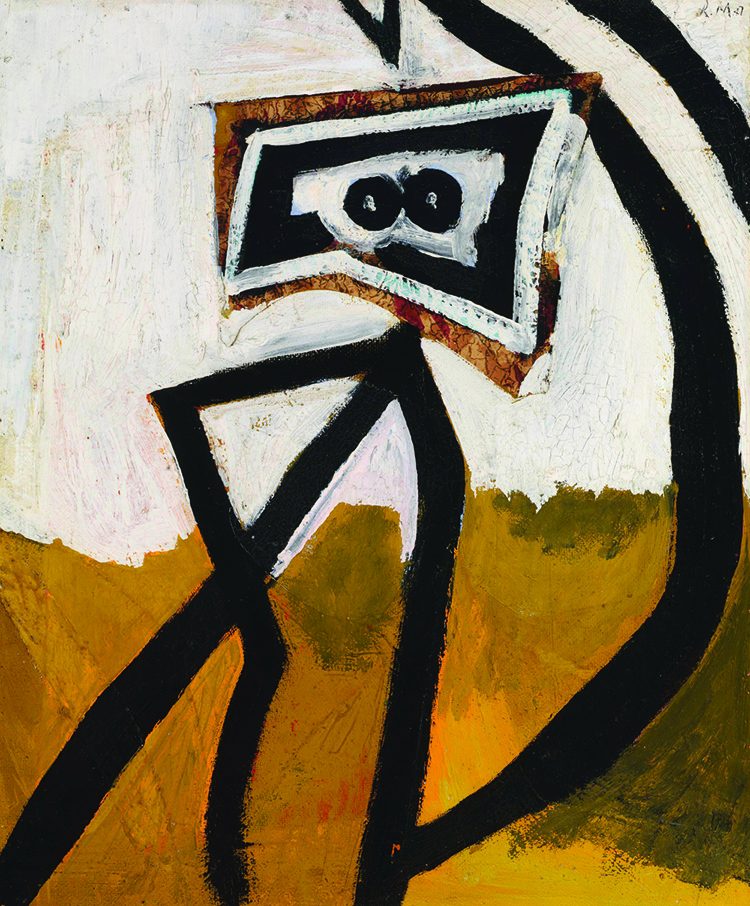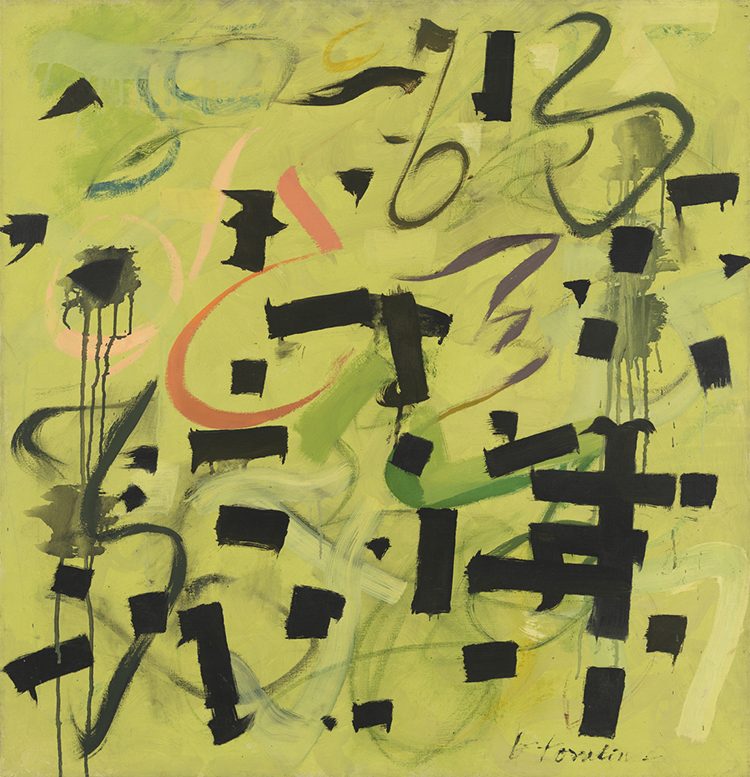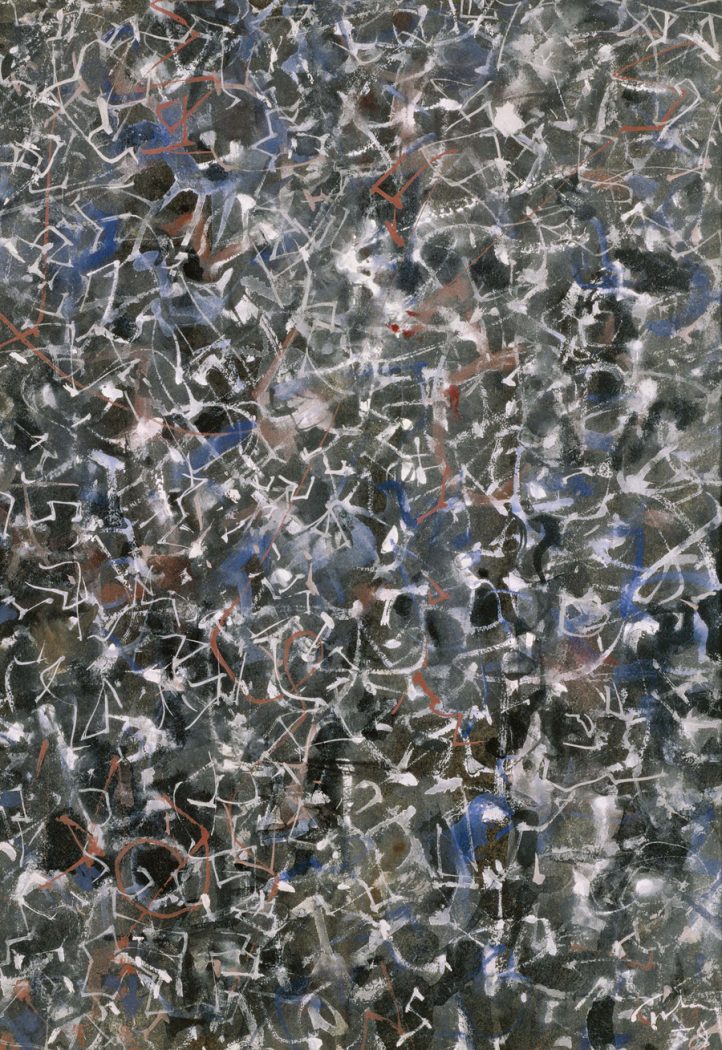Taking inspiration from the major theme of music in Ten Americans: After Paul Klee, we paired 11 staff members with 11 works from the exhibition and asked them to respond to create a playlist in response to their individual artwork. Zuzana Jurisova, Education Coordinator, created this playlist in response to Robert Motherwell’s “Figure in Black (Girl with Stripes).”

Robert Motherwell, Figure in Black (Girl with Stripes), 1947, Oil on paper on fiberboard, 24 x 19 7/8 in. Smithsonian American Art Museum, Washington DC, Gift of the Dedalus Foundation and museum purchase © Dedalus Foundation, Inc./Licensed by VAGA, New York, NY
When I looked at Figure in Black (Girl with Stripes) by Robert Motherwell, I immediately thought of a traveler, an adventurer that is undertaking a voyage to an undiscovered land. I was struck by the fact that the figure in the painting is a girl and shown seemingly alone in the work, but unafraid. The songs I have chosen reflect a journey (both physically and within one’s self) from dissatisfaction (Running Up That Hill, Sprawl II) and the thrill of embarking on an adventure (Verdis Quo, Walking on a Dream). I finished the playlist with Yellow by Coldplay as Motherwell was heavily influenced by the ocher color of his childhood in California and the song also feels like a homecoming of sorts.
Zuzana Jurisova, Education Coordinator
Feeling inspired? Create your own playlist based around works in the exhibition and send it to us at communications@phillipscollection.org and we may feature it on our blog and social media.


